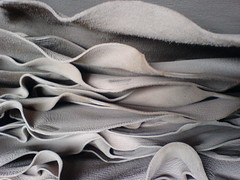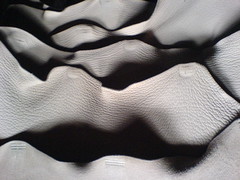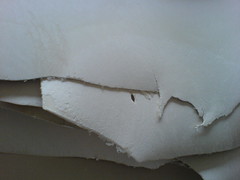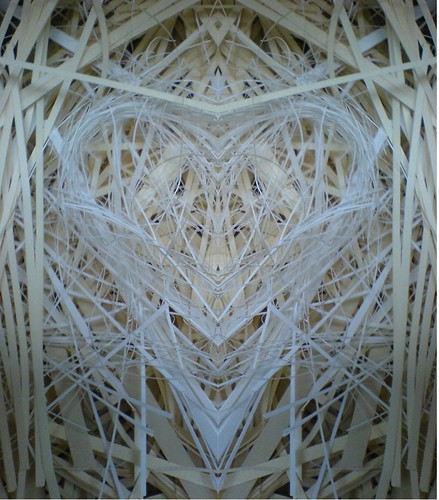In the years between the birth of Jane Austen and the death of Oscar Wilde, books changed from being the exclusive property of the wealthy to the pleasure of the professional classes. Bookbinding played a large part in that change. But that was nothing in comparison of what was to come.
The classic late Victorian book was a hardback, its covers made of strawboard (medium density cardboard, basically) and covered in cloth or thin leather. The signatures were sewn onto thin cotton ribbons, and pre-made headbands were glued onto the spine along with a cotton lining. The book block was then pasted into a separate case, with the endpapers providing the adhesive surface.
A copy of Pride and Prejudice, bound like that, could be purchased for 3s 6d in 1900 – about the same price as a week’s food for an adult. The book would still be structurally sound and readable now.
But the economic pressures that created the Victorian book didn’t stop at the turn of the twentieth century. Literacy, leisure time and affluence spread, andeveryone wanted to read. To meet this demand, the mass-market paperback was born, with a stiff paper cover wrapped around three sides of the book block. It had no endpapers or headband, and made no attempt to look like the seventeenth century Book Beautiful*.
Up until the 1930’s, paperbacks were often sewn, though without any supports. But even when automated, sewing was too expensive, so publishers returned to an idea from the mid nineteenth century – the glued spine, now called perfect binding. Twentieth century chemistry delivered glues that stayed flexible longer than India rubber. After World War II, polyvinyl acetate (PVA, a variant of Elmer’s Glue) became the adhesive of choice. In various formulations, it still is.
Now, in the twenty-first century, the downward pressure on book prices still continues. Its current effect is not on the mass-market paperback, which is already as inexpensive as it can be, but on the hardcover book. Until the late twentieth century, hardbacks were throwbacks to late Victorian bookbinding – sewn book blocks, cased in. The boards were covered in plasticised paper rather than cloth or leather, but the structure was sound. Current hardcover books are really mass-market paperbacks with hard boards – they are more often perfect bound than not.
This combination of a paperback’s spine and a hardback’s case is disastrous. Books with hard covers generally have squares, meaning that the covers are larger than the book block. Squares look nice, and they allow space for headbands. But they also mean that the edges of the pages of a shelved book hang suspended in the air. Gravity being what it is, the bottom fore corner of the book will slowly drop down, pulling the spine forward at the head of the book. A sewn binding has the integrity to withstand this, but a glued binding does not. Perfect bound hardbacks, given time, last less well than paperbacks, where the entire bottom edge rests on the shelf**.
Perfect binding may be a misnomer, particularly in hardback books, but it has its place in the wider picture. I can buy a new paperback copy of Pride and Prejudice for £1. A loaf of branded bread in a supermarket costs just about the same amount. In just over a century, books have become as affordable as bread.
Pause a moment and think about that, and the lives that have changed as a result.
What is the future of the book as a physical object? The Internet has already dropped the price of reading matter to effectively free, but I can’t take my laptop into the bath***. Will electronic paper mean that we each only own one book, and change the content at will? Will the next generation read onscreen as well as I read on paper? Will civilisation fall, leaving me with a new career as a skilled bookbinder in a wasteland of crumbling perfect bindings?
* I am excluding discussions of paper quality from this overview. Trust me that it declines in tandem with the other elements of binding durability.
** And I can’t rebind them. Did I mention that that bugs me?
*** Not twice, anyway.
Originally posted on Making Light




